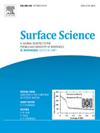利用振动和频发生显微镜进行表面成像
IF 2.1
4区 化学
Q3 CHEMISTRY, PHYSICAL
引用次数: 0
摘要
几十年来,非线性光谱学一直是探测表面的重要技术。近来,非线性光谱学又成为表面单层成像的有用工具。这种非线性显微镜技术,更具体地说是和频发生显微镜技术,可提供不同分辨率的光谱和空间信息,从而对表面活性进行监测和成像。以下论文重点介绍了和频发生成像的历史、理论和一系列实验优势,并着重介绍了展示这些优势的具体实验。本文章由计算机程序翻译,如有差异,请以英文原文为准。

Imaging on surfaces with vibrational sum frequency generation microscopy
Nonlinear spectroscopy has been a valuable technique for probing surfaces for many decades. Still, in the recent past, nonlinear spectroscopy has become a useful tool for imaging monolayers on surfaces. This technique of nonlinear microscopy, more specifically sum frequency generation microscopy, provides both spectral and spatial information with varying resolution, allowing for the surface activity to be monitored and imaged. The following paper highlights the history, theory, and range of experimental advantages sum frequency generation imaging provides, focusing on specific experiments that put those advantages on display.
求助全文
通过发布文献求助,成功后即可免费获取论文全文。
去求助
来源期刊

Surface Science
化学-物理:凝聚态物理
CiteScore
3.30
自引率
5.30%
发文量
137
审稿时长
25 days
期刊介绍:
Surface Science is devoted to elucidating the fundamental aspects of chemistry and physics occurring at a wide range of surfaces and interfaces and to disseminating this knowledge fast. The journal welcomes a broad spectrum of topics, including but not limited to:
• model systems (e.g. in Ultra High Vacuum) under well-controlled reactive conditions
• nanoscale science and engineering, including manipulation of matter at the atomic/molecular scale and assembly phenomena
• reactivity of surfaces as related to various applied areas including heterogeneous catalysis, chemistry at electrified interfaces, and semiconductors functionalization
• phenomena at interfaces relevant to energy storage and conversion, and fuels production and utilization
• surface reactivity for environmental protection and pollution remediation
• interactions at surfaces of soft matter, including polymers and biomaterials.
Both experimental and theoretical work, including modeling, is within the scope of the journal. Work published in Surface Science reaches a wide readership, from chemistry and physics to biology and materials science and engineering, providing an excellent forum for cross-fertilization of ideas and broad dissemination of scientific discoveries.
 求助内容:
求助内容: 应助结果提醒方式:
应助结果提醒方式:


